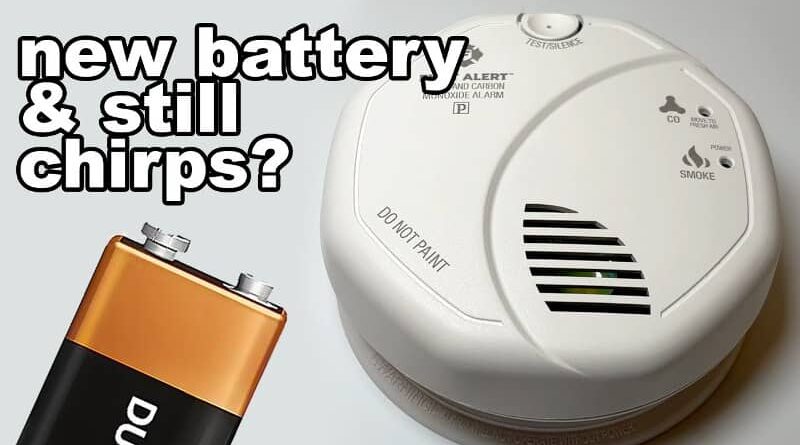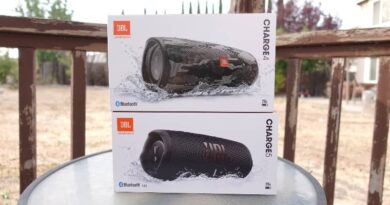
Carbon monoxide is significantly jeopardizing our health and well-being due to being both odourless and colourless. The peaceful killer is capable of creeping into our residences without warning or a dependable way to detect it, imperilling the welfare of those we cherish.
As responsible homeowners, we work to establish an atmosphere of safety for ourselves and our families. While we diligently install smoke alarms to detect fires, we often overlook the equally important threat of carbon monoxide.
First Alert, a trusted brand in home safety, offers a comprehensive range of carbon monoxide alarms designed to safeguard our homes from this deadly gas.
This video will explore the importance of having a First Alert carbon monoxide alarm 5-beep alarm pattern it emits.
Let’s have a look below to get a more detailed view.
Understanding Carbon Monoxide
Before understanding the intricacies of First Alert carbon monoxide alarms, let’s learn more about carbon monoxide.
In fuel-burning appliances such as furnaces, gas stoves and fireplaces, incomplete combustion releases carbon monoxide as a byproduct. Additionally, generators and automobile engines can emit it.
When we breathe in carbon monoxide, haemoglobin in our blood binds, reducing the amount of oxygen that the blood can transfer to vital organs. Even in low quantities, carbon monoxide exposure can result in symptoms like nausea, headaches, dizziness, and tiredness.
Significant brain damage or death may result from high doses or extended exposure.
First Alert Carbon Monoxide Alarm: A Reliable Solution
First Alert provides a selection of C.O. alarms that integrate cutting-edge technology and user-friendly features in recognition of the value of early detection.
These alarms effectively identify and notify you of carbon monoxide in your house so you can take prompt protective action for your loved ones.
Electrochemical sensors are extremely sensitive to carbon monoxide and are used in the First Alert carbon monoxide alarm. This guarantees quick and precise identification, providing comfort in knowing your family is safe from this sneaky threat.
The alarms have an 85-decibel notice that is loud and distinct and is intended to awaken you from sleep to warn you of the potential hazard.
5 Beeps: What Does It Mean?
If your First Alert carbon monoxide alarm emits a pattern of 5 beeps, it is crucial to understand its significance. The 5-beep alarm pattern indicates that the alarm has detected an elevated level of carbon monoxide.
It serves as a warning to evacuate the premises immediately and seek fresh air. Ignoring this alarming pattern can have serious consequences, as it indicates a potentially life-threatening situation.
Several factors can trigger the 5-beep alarm pattern, including a malfunctioning fuel-burning device, blocked ventilation, or an unusually high concentration of carbon monoxide.
Paying attention to this alarm and investigating the cause promptly is essential.
Troubleshooting and Maintenance
While First Alert carbon monoxide alarms are highly reliable, occasional troubleshooting may be required to ensure optimal performance. Factors such as low battery power or dust accumulation can trigger false alarms.
If your alarm sounds without any apparent reason, follow these steps to troubleshoot the issue:
Check the batteries
Ensure that the batteries are properly installed and have sufficient power. Replace them if necessary.
Clean the alarm
Gently vacuum or dust the alarm to remove any debris or dust particles that may interfere with its sensors.
Regular maintenance is vital to ensure the ongoing effectiveness of your carbon monoxide alarm. Test the alarm monthly by pressing the test button to verify that it emits a loud sound.
Additionally, replacing the batteries annually or as soon as you hear a low-battery chirp is recommended.
Ensuring Your Safety
You can ensure the safety of your home by installing a First Alert CO alarm to protect against carbon monoxide hazards. Nevertheless, there are several more things you could do to boost your security:
Install Multiple Alarms
Place carbon monoxide alarms on each level of your home and near bedrooms to maximize protection.
Follow Manufacturer Guidelines
Read your carbon monoxide alarm’s installation and user manual to ensure proper placement and functionality.
Maintain Ventilation
Keep fuel-burning appliances adequately ventilated to minimize the risk of carbon monoxide accumulation.
Schedule Professional Inspections
Regularly service your fuel-burning appliances and have them inspected by professionals to detect any potential issues.
Educate your Family
Teach your family members about the dangers of carbon monoxide and the appropriate actions to take in case of an alarm.
F.A.Q.s
1. How often should I replace my carbon monoxide alarm batteries?
It is recommended to replace the batteries in your carbon monoxide alarm annually or whenever you hear a low-battery chirp.
2. Can I install a carbon monoxide alarm myself?
Yes, the majority of C.O. detectors are made to be installed quickly. To ensure correct installation, it’s crucial that you carefully adhere to the manufacturer’s instructions.
3. Are carbon monoxide alarms necessary if I have an electric heating system?
Even if your home has an electric heating system, additional fuel-burning appliances like gas stoves or fireplaces could still put your family in danger of C.O. exposure. As a result, a carbon monoxide alarm installation is crucial for overall house security.
Conclusion
Never undervalue the significance of safeguarding your house and loved ones from carbon monoxide’s sneaky menace. A First Alert carbon monoxide alarm offers a dependable way to find this lethal gas and warn you of potential danger.
You may dramatically lower the possibility of poisoning with carbon monoxide in your home by spending money on a high-quality C.O. alarm and adhering to proper installation and maintenance procedures.
Prioritise safety while taking the essential precautions to protect your family. Enjoy the peace of mind that comes with knowing you have a protector amid silent threats by immediately installing a First Alert carbon monoxide alarm.


